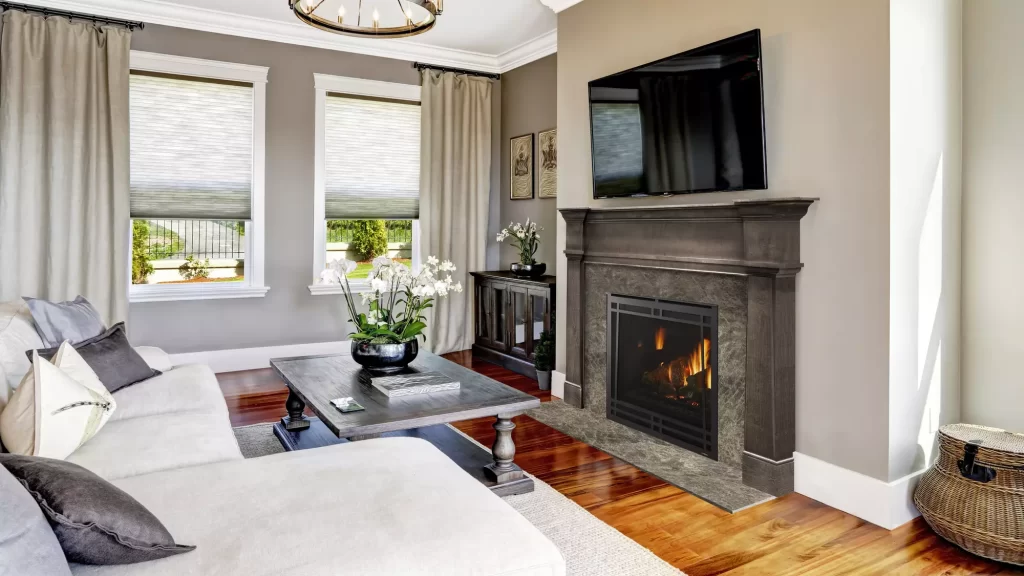Gas Fireplaces
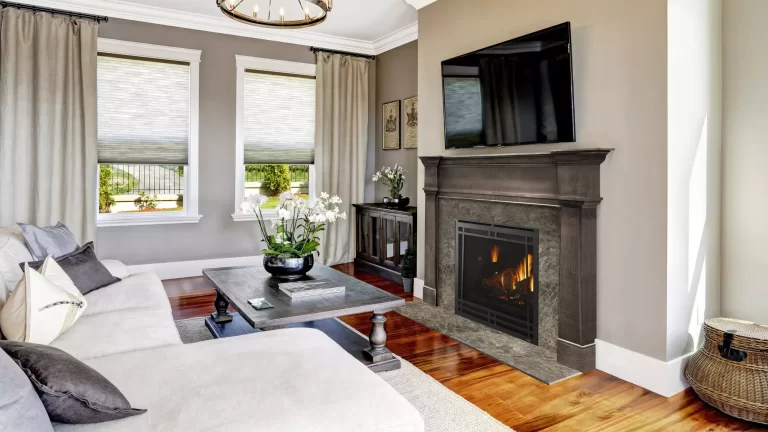
Henry’s Fireplace sells and services most major brands of gas fireplaces: Heatilator, Monessen, Kozy Heat, Valor, Napoleon, White Mountain Hearth, and many more.
With over 20 years of experience our fireplace experts can help guide you to the best solution for your project.
Remodel or new construction, we can help you realize your dream fireplace and feature wall.
Why Buy A Gas Fireplace?
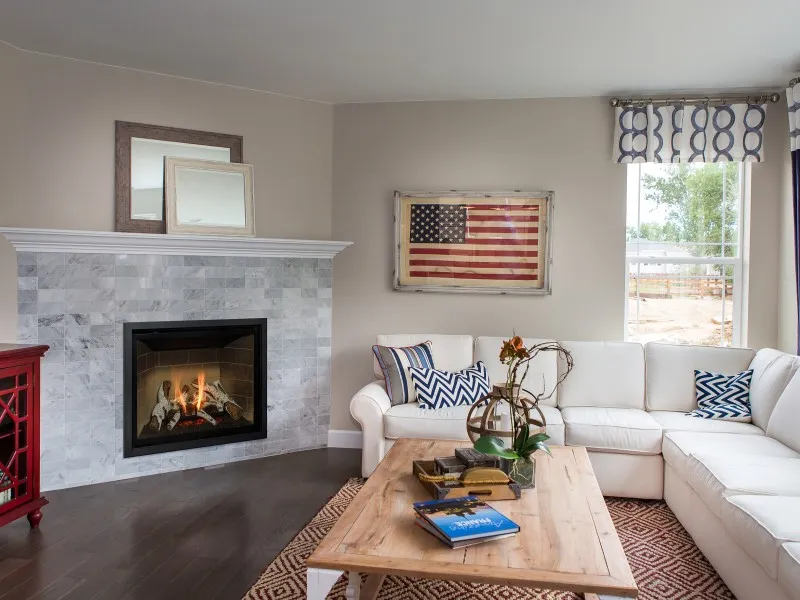
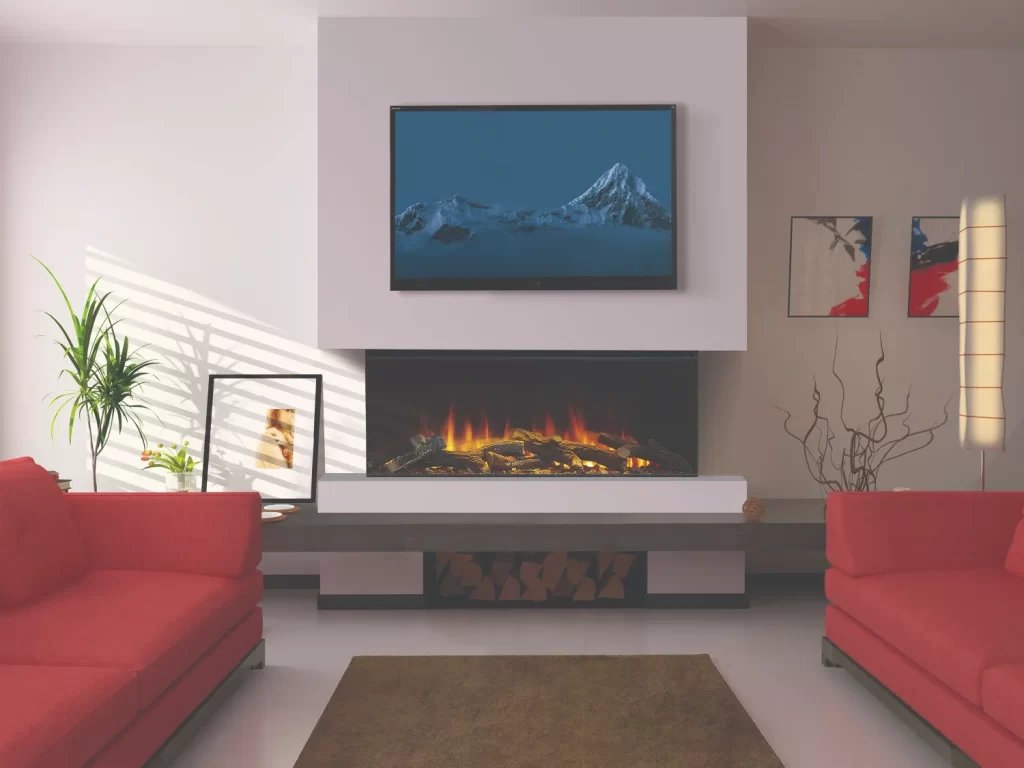
Benefits: Convenient, Clean, Simple. Quickly turn on the fire with a snap of a switch or an adjustment of a thermostat. Most hearth products also for adjustments in flame height and fire intensity.
Fire Characteristics: Consistent, decorative and controllable. With some gas hearth products, you select the media and intensity of the fire.
Fire Starting: Simple. Operate through the flip of a switch or the click of a remote. It’s very easy.
Type of Heat: Convective + Radiant.
Fuel Storage & Handling: Either through a pipeline (Natural Gas) or a tank (Liquid Propane).
Types of Gas Fireplaces
We service and sell most types of Gas fireplaces, including:
Direct Vent
This is the modern standard for gas fireplaces. Direct Vent Technology is a method of venting a fireplace that involves a Co-Axel pipe, essentially this is a pipe inside of another pipe, typically a 4” pipe inside of a 7” pipe, or a 5” pipe inside of an 8” pipe. The interior pipe acts as the exhaust, and the exterior pipe acts as the intake. Almost every direct vent fireplace has a sealed combustion chamber, and the air is pulled from the outside, used in the combustion chamber, and expelled as exhaust through the interior pipe of the chimney. A few benefits of this style of fireplace venting;
The fireplace is pulling air from outside to burn, rather than burning air that is already warm, keeping the warm air inside of the home.
Second, since you are not burning room air, you are not lowering the pressure of the house, which means that you vastly diminish the amount of outside (cold) air infiltration into the home. This type of fireplace can vent either horizontally or vertically, with flexibility in each scenario.
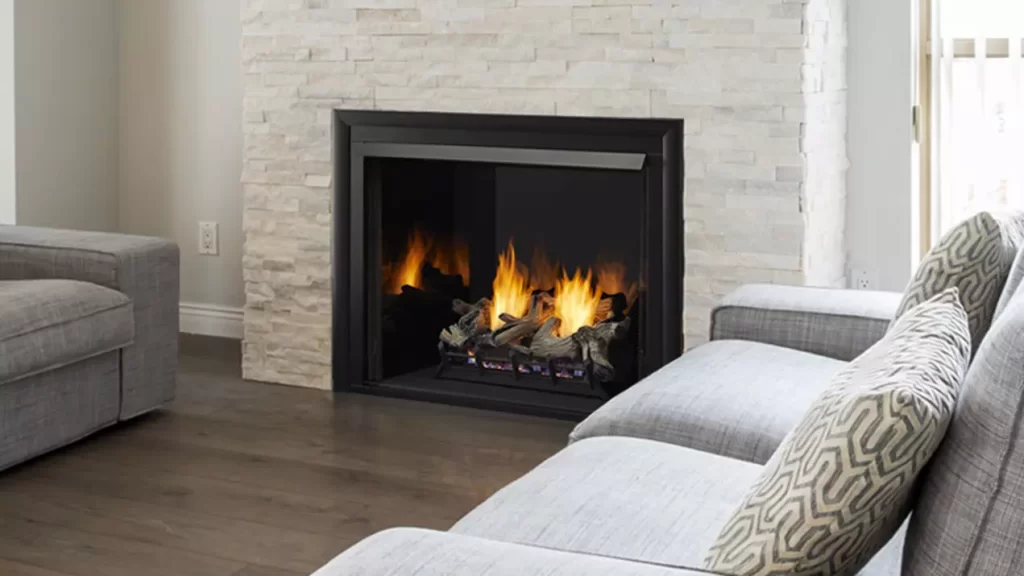
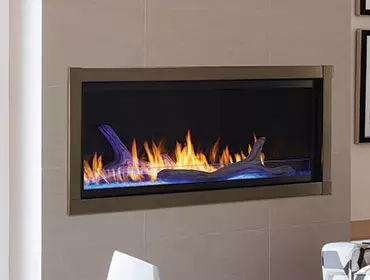
Vent free
A vent-free fireplace is essentially what it sounds like: a fireplace that’s designed to burn without the need for a chimney or other types of ventilation. Traditional gas fireplaces, as well as wood-burning fireplaces, use an exhaust flue to remove exhaust from the home and bring combustion air into the sealed firebox. In contrast, a vent-free fireplace doesn’t use a flue, it relies on the available oxygen in the room for combustion.
One of the biggest benefits of a vent-free fireplace is that they offer better efficiency compared to a vented fireplace. Without the need for a vent, 99% of the heat generated by a ventless fireplace stays inside the room, essentially allowing you to achieve complete combustion and optimal heat retention in your home. Another benefit of vent-free fireplaces is that they’re low-cost and easy to install. Consider a vent free fireplace especially if installing a vented unit would be difficult or impossible due to the location of the proposed unit.
B-vent
This was the first type of gas fireplace sold, it is essentially the same as wood burning fireplace with an open-faced fireplace that pulls room air for combustion, and exhausts out of a vertical chimney. On some units there is the option of an outside air source to equalize pressure in the firebox and assist with the draft.
